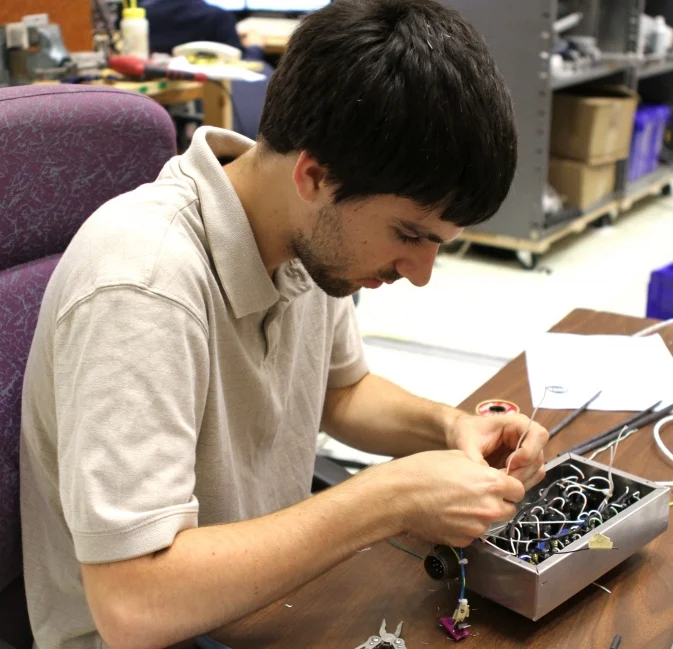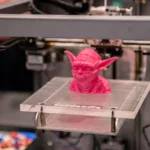Dr. Rinehart is hoping to change the way scientists study the stars. To do this he needs a group of interns…and one very large balloon.
From a pool of 300 applicants came a group of seven summer interns to work with Dr. Stephen Rinehart, associate chief of the Observational Cosmology Laboratory at NASA’s Goddard Space Flight Center in Greenbelt, Md. The seven students are contributing their expertise to an intern project called BETTII, short for Balloon Experimental Twin Telescope for Infrared Interferometry.

Designed to study stellar evolution, the BETTII mission is a large project with a host of individual well-defined subsystems, which makes it ideal for division among interns. “We can find individual projects that can be done in the course of an internship,” Rinehart said. The students can look back at the summer and say, “I built that,” he said. Spencer Gore, Arpan Rau, Stephen Weinreich, Deborah Andrade, Sophie Johnson-Shapoval, Marcelo Canaparro and John Alcorn are working with Rinehart, as well as individual mentors, to make sure BETTII is ready for its 2015 launch date.
Earth’s atmosphere poses problems for astronomers using ground-based infrared telescopes: From the ground an observer would not be able to see through the atmosphere because it is opaque at these wavelengths. However, at higher altitudes, seeing beyond the atmosphere is possible.
Astronomers want to make observations in infrared light because it can cut through interstellar dust and provide some of the best views of star formation. The best place for an infrared telescope would be in space, above the distortions Earth’s atmosphere causes. However, sending a big telescope to space would be expensive and challenging. With that in mind, Rinehart thought of a more cost-effective idea, which was to try using interferometry. Interferometry is a method in which the observations of smaller telescopes are combined, effectively providing the viewing power of a larger one.
“BETTII was conceived to prove that putting an interferometer in space would work,” Rinehart said. The whole machine will be 30 feet long, 6 feet across and 8 feet high. However, the two telescopes will each be less than 2 feet wide. Without interferometry, a single telescope would need to be about 65 feet in diameter, which would weigh more than 1,000 pounds. Scientists at Goddard will send BETTI up on a balloon above 99.5 percent of the atmosphere. “The heavier the payload, the bigger balloon you need,” Rinehart said.
For BETTII, Rinehart hopes to use a balloon that is about 250 feet tall, and 290 feet in diameter. On the balloon, BETTI will sway like a pendulum, and the remaining atmosphere will still be able to distort observations. This year’s interns are set to work on BETTII’s control system, which will offset these movements and make the twin telescopes as precise as possible.
BETTII will allow scientists to look through the interstellar dust clouds and study coevolution, the science behind how stars evolve in proximity to one another. “It is a really unique way to study the earliest stages of star formation,” Rinehart said.
Arpan Rau, who attends Naperville North High School near Chicago, is the only BETTII intern in high school. Rau said he benefits from the fact that he is getting the chance to learn a lot that he hasn’t yet studied. “I can’t go 10 minutes here without learning something new or having my mind blown by one of the other interns,” he said. “It’s definitely an experience.”

Rinehart set up the program so that at first the interns are working individually. However, as the internship progresses, the projects will soon piece together and become a group effort.
“Everyone is working on very specific tasks but overall it is the same project,” said John Alcorn, from the University of Alabama in Huntsville. “It is great to be part of the whole thing while you’re still doing your own specific set of tasks and problems.”
Spencer Gore, from the University of Illinois at Urbana-Champagne, is a returning BETTII intern. Gore said he came back to work on this project because he is really invested in the goal of the mission. “Dr. Rinehart and the other mentors play a very important role in my life,” he said. “They are, in many ways, an extension of my family and friends because I know that they feel invested in my success as much as I feel invested in the success in their project.”
The seven students are working to piece together the BETTII puzzle, drawing on the notes, resources, technology and programming from previous interns. The progress they make this summer will help the next teams succeed as well. In the end each intern is contributing to BETTII’s development and helping the world learn that much more about the formation of the stars.







